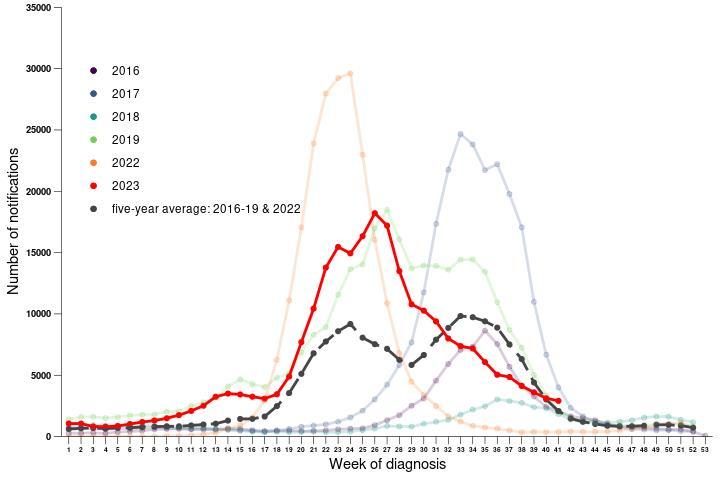How were this year’s recommendations made?
The WHO uses global influenza surveillance data to make influenza vaccine strain recommendations for the northern and southern hemispheres each year.4,5
Why are different strains recommended for egg-and cell-based vaccines?
Sometimes influenza viruses may not grow equally as well in egg- and cell- based vaccine production systems.4 When this is the case, different viruses with similar properties are sometimes recommended for the production of each vaccine type.4
How do these recommended strains differ from the northern hemisphere 2023–24 vaccine ?
The strain recommendations differ in the A(H3N2) vaccine virus component.
A/Darwin/6/2021-like and A/Darwin/9/2021-like viruses were recommended for the 2023-2024 northern hemisphere A(H3N2) cell and egg-based vaccine components, respectively. The 2024 southern hemisphere vaccine recommendation for the A(H3N2) vaccine component is an A/Massachusetts/18/2022-like virus for cell-based and recombinant vaccines and A/Thailand/8/2022-like virus for egg-based vaccines.
What was Australia’s 2023 influenza season like?
Influenza season has been a bit different from usual over the past couple of years because the measures Australia took to prevent the spread of COVID-19 (like face masks , social distancing, lockdowns, and local and international travel restrictions) also helped to stop the spread of flu.6–8
As COVID-19 control measures relaxed, Australia experienced a predicted rebound in influenza cases during the 2022 season.9,10 In 2023, total influenza case numbers were similar to those of 2022 and peaked in June.11 Despite this, influenza vaccination rates were lower than previous years.12
Number of influenza cases reported in Australia by month and week of diagnosis, 2016–202311
Influenza in Australia in 202310-17
| |
2021
Influenza Season |
2022
Influenza Season |
2023
Influenza Season |
| Notifications |
598 |
225,332 |
251,095 |
| Influenza-related hospitalisations |
1 |
1832 |
3,480 |
| Influenza-related deaths |
0 |
308 |
269 |
| Population vaccinated (%) |
34% |
42% |
34% |
Since March 2021 vaccination providers have been required to record all influenza vaccines given and report these numbers to the Australian Immunisation Register (AIR). This has been very valuable as it has given us more accurate data on influenza vaccine coverage across Australia.18
What can we expect in 2024?
It’s difficult to predict the severity of Australia’s 2024 influenza season. Some experts are predicting an early 2023-24 winter influenza season in the northern hemisphere - patterns observed abroad may be an early indicator of Australia's influenza activity next year, so protection is important. 19,20
Annual influenza vaccination is still the simplest and most effective protection against influenza and its complications.9 It’s important that you speak with your healthcare professional to discuss which influenza vaccine is most suitable for you.
In addition to vaccination, there are other important things you can do to reduce your chances of getting sick and passing influenza on to others:
- wash your hands frequently and dry them properly
- avoid people who are sneezing or coughing
- if you need to sneeze or cough, use a tissue and throw it out immediately afterwards
- if you are unwell, stay home.
Influenza can disrupt your life. There is a range of influenza vaccines available. Speak to your GP, pharmacist or nurse about which one is best for you.
